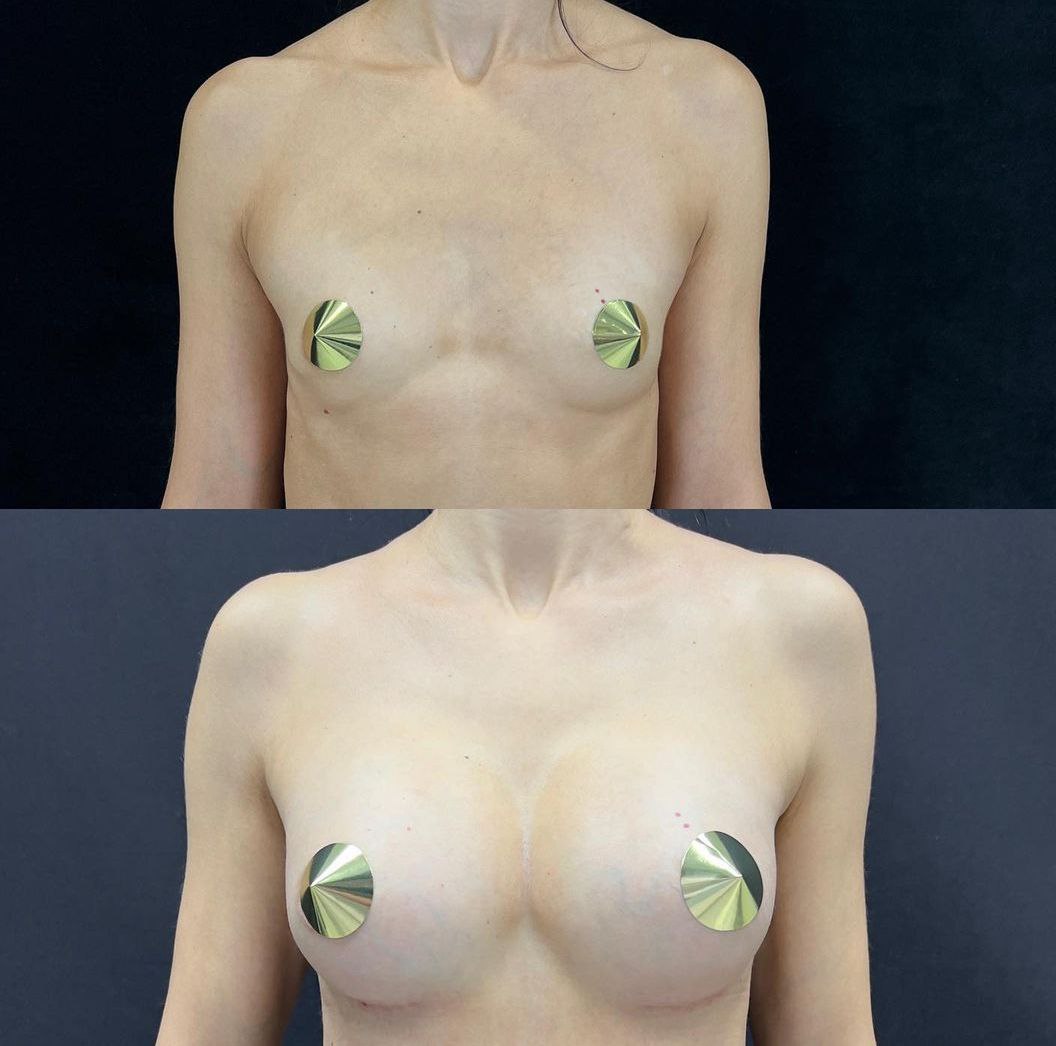Mammoplasty (Breast plastic surgery)
Mammoplasty is a plastic surgery aimed at enhancing the appearance, size, and contour of a woman's breasts. Women consider breast augmentation for many different reasons. Breasts that are too large or heavy can cause chronic neck and back pain, while those considered too small can lead to self-esteem issues. Some women desire augmentation after their breasts change after pregnancy. Others desire to correct an asymmetry in breast size. Breast surgery (mammoplasty) can help you overcome these frustrations and give you renewed confidence in yourself and your body.

Mammoplasty is performed on women over the age of 18 up to the age of 60-70. If the patient wants to lose weight or gain weight it should be before making a decision to have mammoplasty. It is possible to give birth and feed the baby after breast augmentation surgery, because now the implant is not placed under the gland and the gland is not damaged. The surgery takes 1.5-2 hours and patients spend 12 hours in the clinic. The patient is discharged in the morning as video endoscopic mammoplasty is a non-invasive, less painful method.
Indications for mammoplasty:
1. Asymmetry,
2. Dissatisfaction with breast size or shape,
3. Reconstruction after trauma or surgery for breast cancer,
4. Ptosis (breast prolapse) due to age-related changes, pregnancy, breastfeeding and after weight loss.
Before surgery:
1. For 14 days before the operation, stop taking hormonal contraceptives.
2. For 7 days before the day of the operation, exclude smoking and taking alcoholic beverages and anticoagulants.
3. Undergo a physical examination: general and biochemical tests of blood and urine, ECG, ultrasound imaging of the breast,
4. Select the right implant.
Recovery period:
1. The recovery period lasts 2 months.
2. Wear special compression garments for 4-6 weeks.
3. Avoid doing heavy activities.
4. Rest only in the supine position.
Contraindications:
1. Blood clotting problems
2. Hemophilia
3. Patient not reaching 18 years of age
4. Infections, acute inflammations
5. Chronic diseases
6. Oncological diseases.